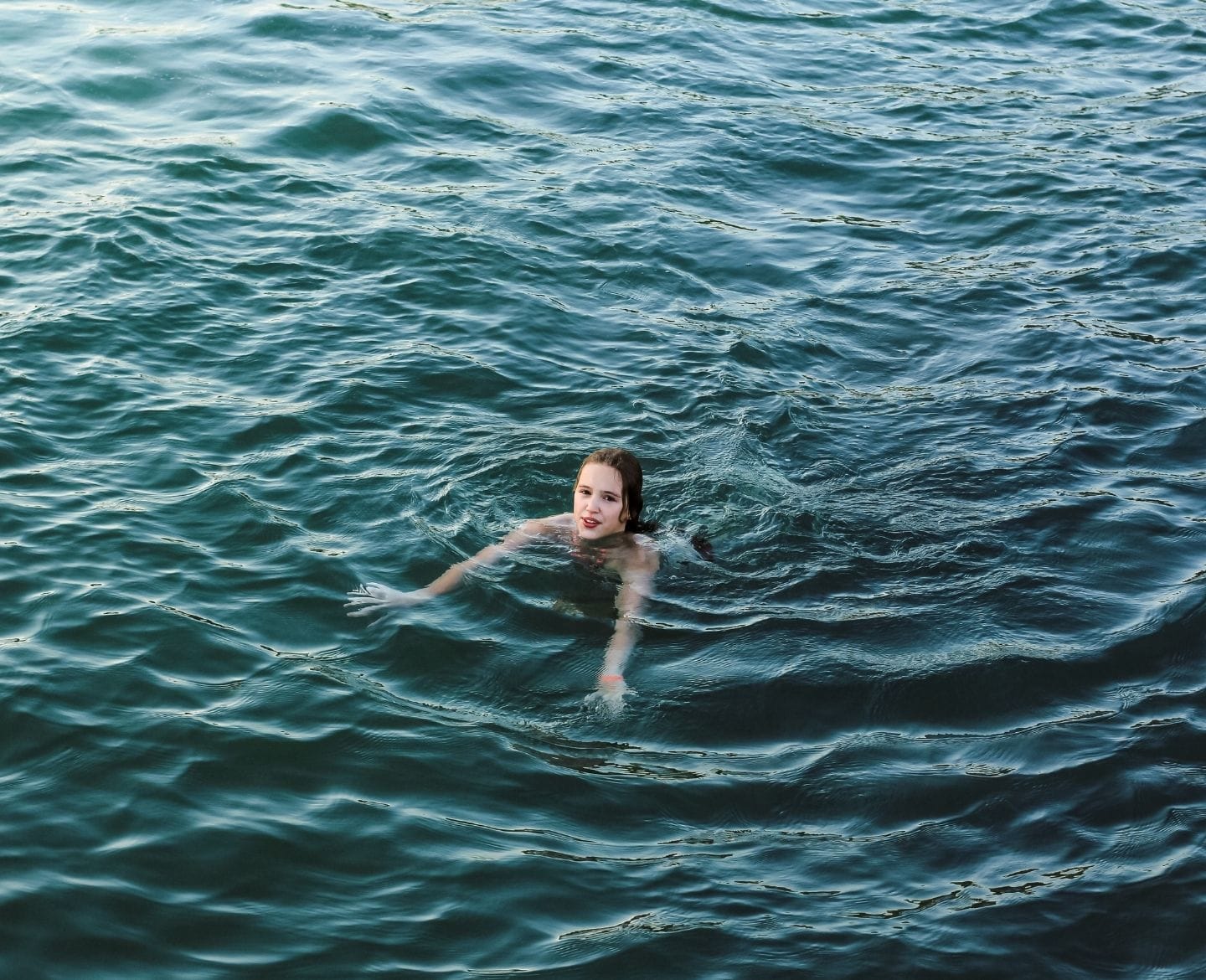Teens are the second most at-risk age group for drowning

TatyanaO/Twenty20
Keep your teen safe with these expert tips.
Table of Contents
Discussions about kids and drowning usually focus on younger children, but teens are also at risk. According to a 2021 report on drowning published by the American Academy of Pediatrics (AAP), teens—especially adolescent boys aged 15 to 19—are the second highest group at risk for drowning, after kids aged 1 to 4. About half of teen drowning accidents occur in natural water settings—meaning rivers, lakes and oceans—not in a swimming pool.
Any parent of an older child knows teens don’t always love taking advice, but communication is critical for drowning prevention. Talking with your teen about water safety—even if they’re strong swimmers—can help ensure they stay safe.
Why are teens at higher risk for drowning?
There are a few reasons why teens are at risk. Courtney Wheelock, District Senior Aquatic Specialist for the YMCA of San Francisco, says it makes sense that as kids get older and become more independent, they’re also more likely to take risks.
“They may be swimming in less controlled bodies of water more often than younger kids,” she shares with Motherly. “They are also often unsupervised, and they are less likely to want to use protective equipment such as lifejackets.” Studies using World Health Organization (WHO) data also suggest that teens are more likely to overestimate their skills in the water.
And even though parents don’t like to think about it, teens are more likely to experiment with substances that could impair their ability to make good decisions in the water. Alcohol is a major factor behind teen drowning incidents in the U.S.
Related: A drowning investigator’s plea to parents goes viral
Expert tips for preventing teen drowning
The stats are sobering, but the good news is that you can make a difference by talking with your teen about water safety.
Teach teens to swim
According to Ricardo Freitas, Aquatics Director at Ives Pool in California and a lifeguard for more than 30 years, the best way to prevent drowning is to learn how to swim. If your teen doesn’t know how to swim or their water skills are rusty, enroll them in a swimming class. Even strong swimmers can benefit from a refresher course. The Red Cross and the YMCA both offer classes.
Teens may feel embarrassed learning to swim at a later age, but Wheelock says it’s never too late. “At the Y, we believe everyone should have the chance to learn how to swim.” According to Wheelock, specific skills—like learning how to safely get out of a pool or reach a dock until they can get themselves to safety—can act as benchmarks to ensure your teen is a safe swimmer.
Make sure they wear a life jacket
Life jackets are essential, especially in open water. “Everyone, even strong swimmers, should wear a life jacket when participating in water sports, boating or watercraft activities,” Wheelock shares.
Freitas agrees that choosing the right equipment is critical for safety. Teens may be hesitant to wear a life jacket because they’re not “cool,” but just keep stressing the importance. Making lifejackets a must-have from a young age can also cultivate the habit.
Set a family rule to never swim alone
Wheelock suggests explaining to your teen that a buddy system is critical, especially if there’s no adult supervision. “Make sure an adult knows where you are and gives you permission to swim,” she adds. “Always swim with someone and do regular buddy checks to make sure you know where your friends are, and they know where you are.”
Swim in designated swim areas only
According to Wheelock, open water areas can have uncontrolled or unexpected hazards like currents, poor water clarity, changing water temperature, or even obstacles under the water that you can’t see.
“Know the conditions,” Freitas suggests, and stick to designated swim areas, especially if your teen is going without adult supervision. But even better? Choose sites with a lifeguard. “Ensuring a lifeguard is present adds that extra, important layer of supervision,” Wheelock says.
Related: Consider these safety tips when you’re at the beach this summer
Be respectful of boat safety
Boats can be so much fun, but boat safety is critical for preventing drownings. Wheelock explains that a life jacket is an essential part of boating safety, but also paying attention to visibility, time of day (boating at night is not a good idea), and avoiding alcohol are all important factors—at any age.
Keep talking about drugs and alcohol
Just like you’d talk with your teen about drinking and driving, keep an open line of communication about alcohol and drugs around water. Drownings often involve alcohol, so make it known that it should never be used when swimming, boating or participating in any water activities.
Teach your teen how to respond to a water emergency
What happens if your teen is in a dangerous situation or someone around them needs help? Talking about these scenarios is also essential. Wheelock explains that jumping in to try to help someone in the water isn’t a good idea. “A panicked person in the water can grab you and pull you under.”
Instead, she encourages parents to teach teens to use an object like a pool noodle or anything long enough to get to the person without putting themselves in danger. “Use an object to reach out to your friend and pull them back to the shore, the bank, or the side of the pool,” she says.
And if someone is really in trouble, tell your teen that it’s always OK to call 9-1-1.
Related: Drowning doesn’t always look like drowning
A note from Motherly
Above all, the best way to prevent drowning is by having these conversations with your kids from an early age. With these tips, you can keep your teen safe all summer long.
Featured expert
Ricardo Freitas is the aquatics director Ives Pool (ivespool.org) and has been a lifeguard for more than 30 years.
Courtney Wheelock is the district senior aquatic specialist at YMCA of San Francisco. (ymcasf.org)
Sources
Denny, S. A., Quan, L., Gilchrist, J., McCallin, T., Shenoi, R., Yusuf, S., Weiss, J., Hoffman, B., & COUNCIL ON INJURY, VIOLENCE, AND POISON PREVENTION (2021). Prevention of Drowning. Pediatrics, 148(2), e2021052227. doi:10.1542/peds.2021-052227
Wu, Y., Huang, Y., Schwebel, D. C., & Hu, G. (2017). Unintentional Child and Adolescent Drowning Mortality from 2000 to 2013 in 21 Countries: Analysis of the WHO Mortality Database. International journal of environmental research and public health, 14(8), 875. doi:10.3390/ijerph14080875





































